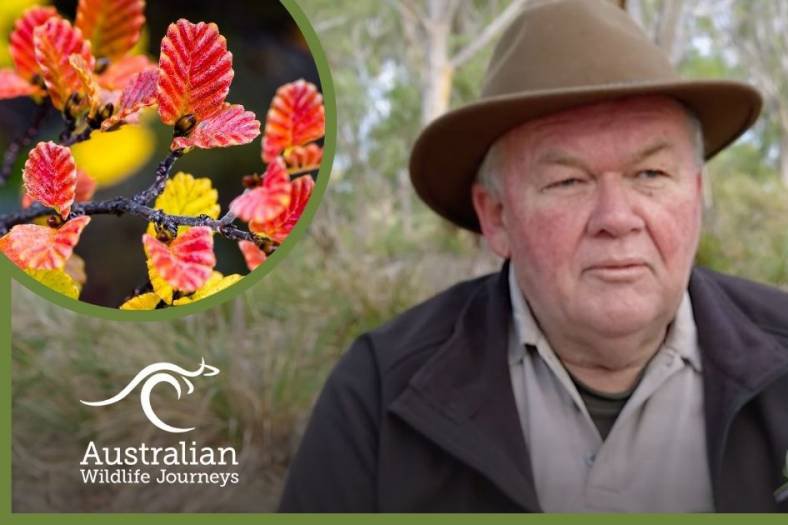Exploring Tasmania’s Botanic Riches with Geoff Curry
When Geoff Curry, long-standing guide with Premier Travel Tasmania, talks about plants, he likes to focus on their ever-evolving relationship with their surroundings. “I’m very interested in how everything interacts with each other. The forest isn’t just a bunch of trees, it’s a living and dynamic place,” he explains. “That’s the story I like to tell when I’m guiding.
Aside from guiding tours for Premier Travel Tasmania, Geoff is President of Threatened Plants Tasmania (TPT) group and is the Conservation Officer for a national orchid society. It’s no surprise, then, that guests exploring with Geoff can learn a great deal about Tasmania’s flora. “There are over 1950 species of endemic plants in Tasmania and over 200 species of native orchids, of which 71 species of these are endemic to the state,” he says. “I’m especially fascinated by terrestrial ground orchids, as many do not photosynthesise and rely completely on microscopic fungi to survive.”
Close to Hobart, is Mount Field National Park where guests can see a diverse range of plant life in a relatively compact space. “Within 30 minutes of drive time we go from a reasonably low altitude up into alpine country and there is a significant change in the habitat and plant life we come across,” Geoff explains. “We see how the trees change in size, starting with the massive giant ash trees and then driving further up to the snow gums, which are quite small. I talk about geology and glaciation, and how the plants and environment interact with each other.”
In Cradle Mountain–Lake St Clair National Park, Geoff concentrates on the alpine grasslands and open forest. “I like to point out the pencil pines, as some of them may be over 500 years old. I also like to show guests the deciduous beech (nothofagus gunii) in the alpine forest. It’s endemic to Tasmania and it’s Australia’s only deciduous tree,” he says. “There are plenty of easy boardwalks to take guests on and we often encounter the local wildlife, including Tasmanian Pademelons and wombats.”
Coles Bay on Tasmania’s East Coast again offers a completely different perspective on plant life, with coastal dry forests growing in an area dominated by granite. “Here we explore a completely different habitat and suite of plants,” Geoff says. “That includes up to 60 species of orchids that can be found flowering during the year.”






